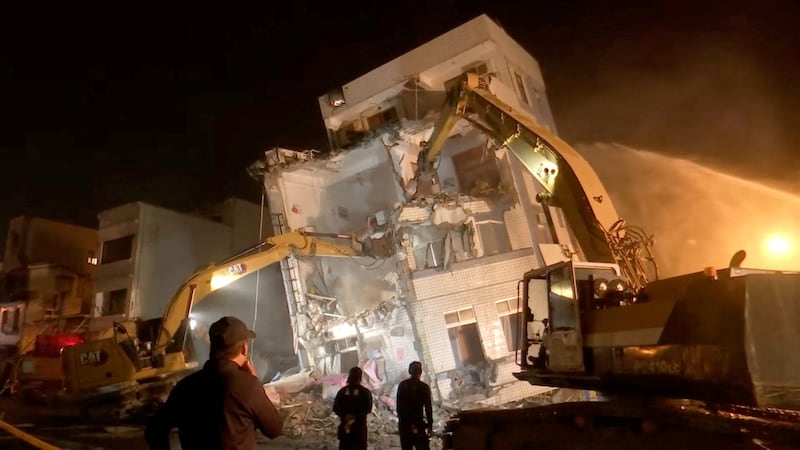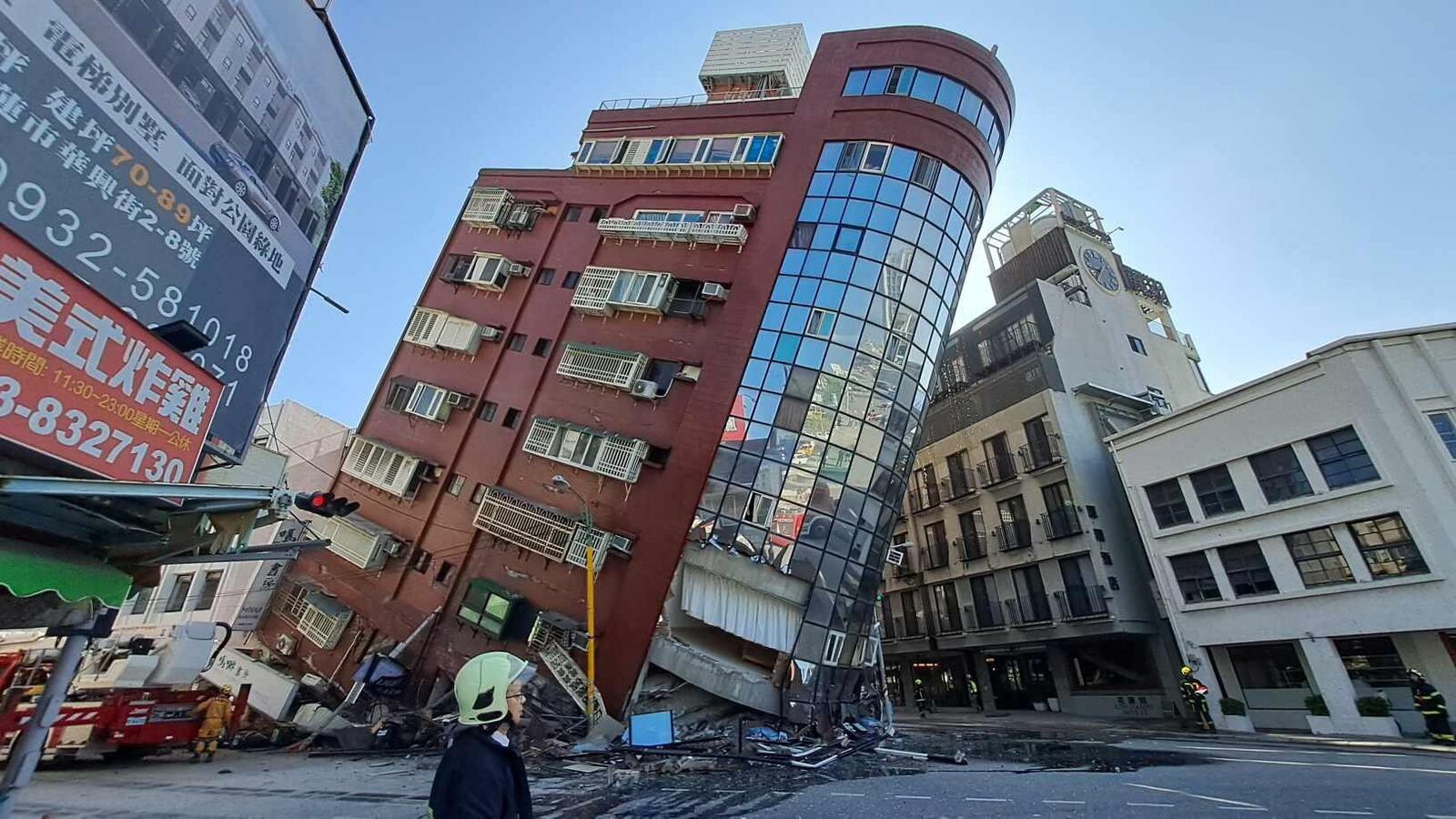A monster earthquake rocked Taiwan during rush hour on Wednesday morning, collapsing buildings in the city of Hualien and triggering tsunami alerts. At least 9 people died, said Taiwan’s national fire agency, and at least another 930 people were injured.
The agency added that, as of 7 a.m. ET Wednesday, 137 people remained trapped in various tunnels around Hualien County, near the epicenter. Rescue workers have rushed to save those trapped, so far bringing at least 75 people from the tunnels to safety.
At least 50 of the stuck people are said to be employees of the Silks Place Hotel Taroko, who were traveling through a tunnel in four mini busses. Another 71 of the trapped are workers at rock quarries, officials said.
Video posted to social media showed several tall buildings off their foundations and listing to one side at a sickening angle. Other footage showed bikes and cars stopped on a bridge while it shook and swayed.

Rescue workers search for survivors after an earthquake struck Taiwan.
ReutersTVBS, a Taiwanese broadcaster, said the massive cliff at the head of turtle-shaped Guishan Island had been damaged. Local officials said at least 300,000 households lost power and that the island’s metro lines and high-speed rail system had suspended operations indefinitely.
A chilling video Wednesday, obtained by CNN, showed a landslide engulf an entire highway on the island. Another, obtained by Reuters, showed a building partially collapse onto a busy street.
The U.S. Geological Survey measured the quake—which could be felt in Taipei—at 7.4 on the Richter scale, with aftershocks as high as 6.5.
“The earthquake is close to land and it’s shallow. It’s felt all over Taiwan and offshore islands,” a Taiwanese official told reporters, according to Agence France-Presse. “It’s the strongest in 25 years since the (1999) earthquake.”
The 1999 quake, which measured at 7.6-magnitude, killed 2,400 people.
Tsunami warnings were issued for Okinawa, where the U.S. has a military base, and nearby islands in southern Japan, but they were later downgraded to an advisory. According to the Associated Press, the Japan Meteorological Agency confirmed it detected a tsunami wave of about 1 foot on the coast of Yonaguni island approximately 15 minutes after the initial quake.
The Philippines Seismology Agency also warned people on the coast of several provinces to get to higher ground, according to Reuters.
U.S. officials addressed the quake on Wednesday morning, with Adrienne Watson, a U.S. National Security Council spokesperson, saying that Washington is “monitoring reports of the earthquake.”
“The United States stands ready to provide any necessary assistance,” she said.







